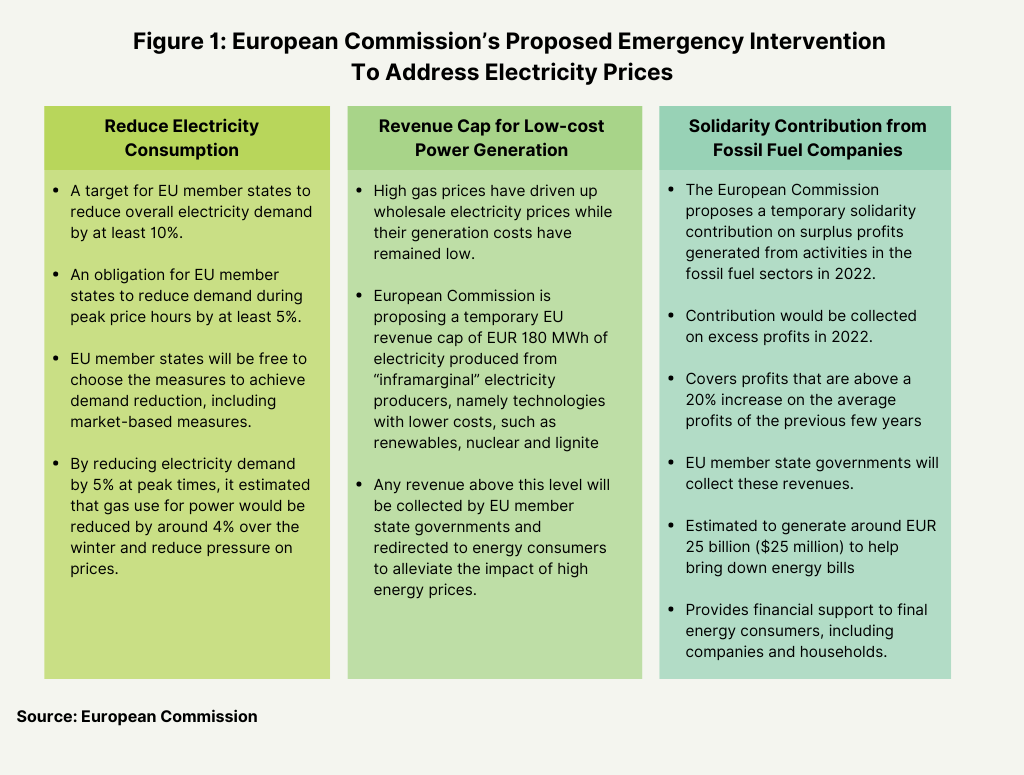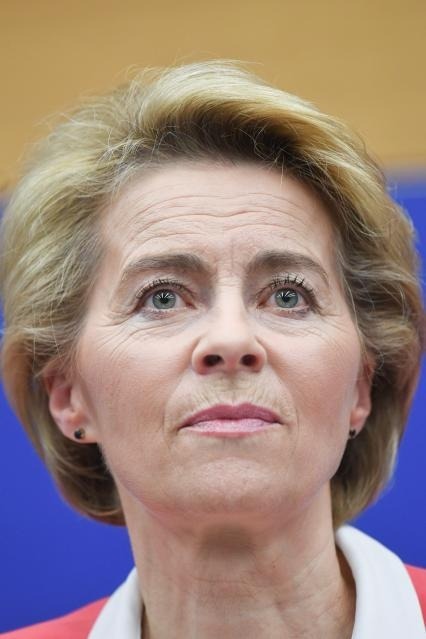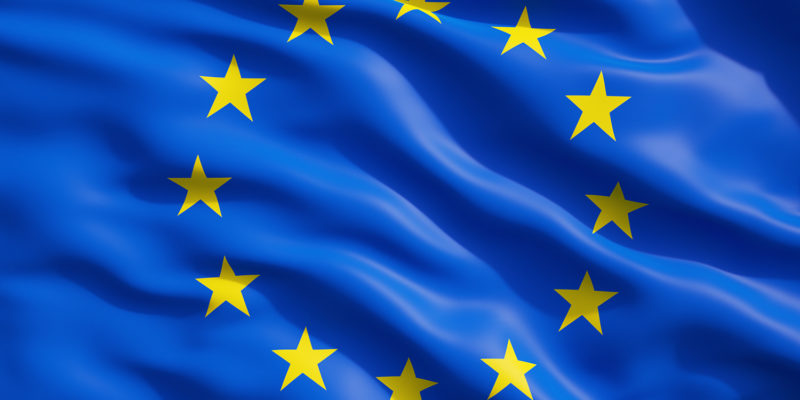EU Energy and Supply: What Will Happen Next?
The European Commission proposed this week an emergency intervention in Europe’s energy markets to address recent dramatic price rises as the EU faces the effects of a severe mismatch between energy demand and supply. What is in the proposal?
The European Commission’s proposal
The European Commission proposed this week (September 14, 2022) an emergency intervention in Europe’s energy markets to address recent dramatic price rises. The European Union (EU) is confronted with the effects of a severe mismatch between energy demand and supply. To ease the increased pressure this puts on European households and businesses, the Commission is taking a next step in tackling this issue by proposing exceptional electricity demand reduction measures, which are designed to help reduce the cost of electricity and that would redistribute the energy sector’s surplus revenues to final customers (see Figure 1).

This new proposal follows previously agreed measures on filling gas storage and reducing natural gas demand to prepare for the upcoming winter. The Commission is also continuing its work to improve liquidity for market operators, bring down the price of natural gas, and reform the electricity market design for the longer term.
First measure: Reducing electricity consumption
The first measure proposed by the Commission to tackle high prices is to reduce demand. To target the most expensive hours of electricity consumption, when gas-fired power generation has a significant impact on prices, the Commission proposes an obligation on EU member states to reduce electricity consumption by at least 5% during selected peak price hours. EU member states will also be required to identify the 10% of hours with the highest expected price and reduce demand during those peak hours. The Commission also proposes that EU member states reduce overall electricity demand by at least 10% until March 31, 2023. They can choose the appropriate measures to achieve this demand reduction, which may include financial compensation. The Commission says that reducing demand at peak times would lead to a reduction of gas consumption by 1.2 billion cubic meters over the winter and that increasing energy efficiency is also a key part of meeting the EU’s climate commitments under the European Green Deal.

President
European Commission
Second measure: Revenue cap for low-cost power generation
The Commission is also proposing a temporary revenue cap on “inframarginal” electricity producers, namely technologies with lower costs, such as renewables, nuclear and lignite, which are providing electricity to the grid at a cost below the price level set by the more expensive “marginal” producers. The wholesale market in the EU is a system of marginal pricing, where all electricity generators get the same price for the power they are selling at a given moment. Electricity producers establish their price according to their production cost. Renewable energy sources are produced at zero cost, and are therefore by definition always the cheapest. The bidding goes from the cheapest to most the expensive energy source. The Commission points out that these inframarginal producers have been making “exceptional” revenues, with relatively stable operational costs as expensive gas power plants have driven up the wholesale electricity price they receive. The Commission proposes to set the inframarginal revenue cap at EUR 180/MWh. It says that this will allow producers to cover their investment and operating costs without impairing investment in new capacities in line with the EU’s 2030 and 2050 energy and climate goals. Revenues above the cap will be collected by EU member state governments and used to help energy consumers reduce their bills. EU member states trading electricity are encouraged, in a spirit of solidarity, to conclude bilateral agreements to share part of the inframarginal revenues collected by the producing state for the benefit of end-users in the EU member state with low electricity generation. Such agreements are required to conclude by December 1, 2022, where a member state’s net imports of electricity from a neighboring country are at least 100%.
Third measure: solidarity contribution from fossil fuel companies
The Commission is also proposing a temporary solidarity contribution on excess profits generated from activities in the oil, gas, coal, and refinery sectors that are not covered by the inframarginal revenue cap. This time-limited contribution would maintain investment incentives for the green transition. It would be collected by EU member states on 2022 profits that are above a 20% increase on the average profits of the previous three years. The revenues would be collected by EU member states and redirected to energy consumers, in particular, hard-hit companies, energy-intensive industries, and vulnerable households. EU member states can also finance cross-border projects in line with the REPower EU objectives, a set of measures to reduce the EU’s dependence on Russian fossil fuels while increasing the resilience of the energy system, or use part of the revenues for the common financing of measures protecting employment or promoting investments in renewables and energy efficiency.
In a further intervention in the electricity market rules, the Commission is also proposing to expand the Energy Prices Toolbox, a set of tools that the EU and its member states have to mitigate the effects of sudden price volatility in the energy market. The proposals would allow below-cost regulated electricity prices for the first time and expand regulated prices to also cover small and medium-sized enterprises.
Other measures proposed by the European Commission
As European Commission President von der Leyen announced last week (September 7, 2022), the Commission will also continue to pursue other avenues to bring down prices for European consumers and industry and ease pressure on the market. The Commission says it will deepen its discussion with EU member states about the best ways to reduce gas prices, analyze various ideas for price caps, and enhance the role of the EU Energy Platform, a voluntary coordination mechanism supporting the purchase of gas and hydrogen for the EU, in facilitating lower price agreements with suppliers through voluntary joint purchasing. The Commission says it will also keep working on tools to improve liquidity on the market for energy utilities, and review the Temporary State aid Crisis Framework, designed to support the EU economy in the context of Russia’s invasion of Ukraine, to ensure that it continues to enable member states to provide necessary and proportionate support to the economy. At the Extraordinary Energy Council Meeting on September 9, 2022, Energy Ministers of EU member states endorsed the Commission’s ongoing work in these areas.







